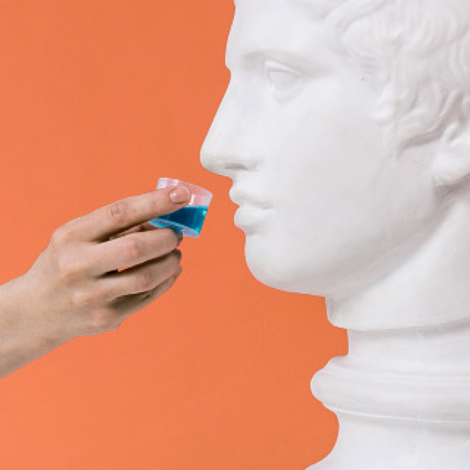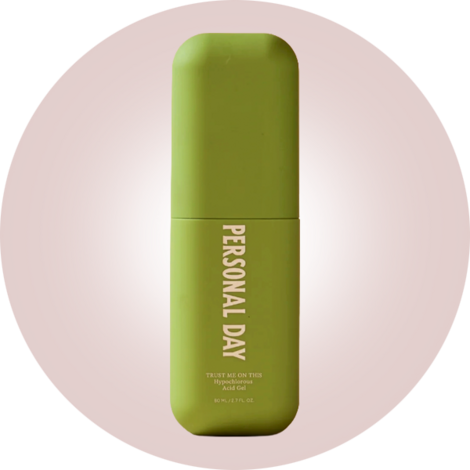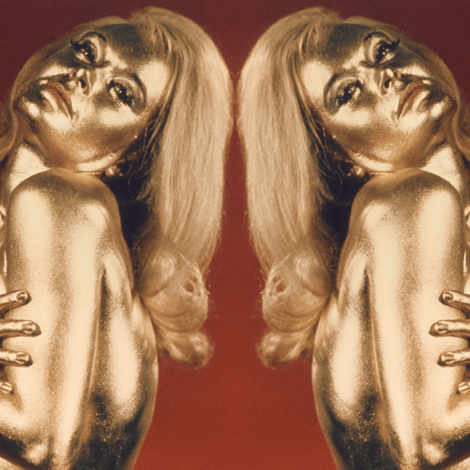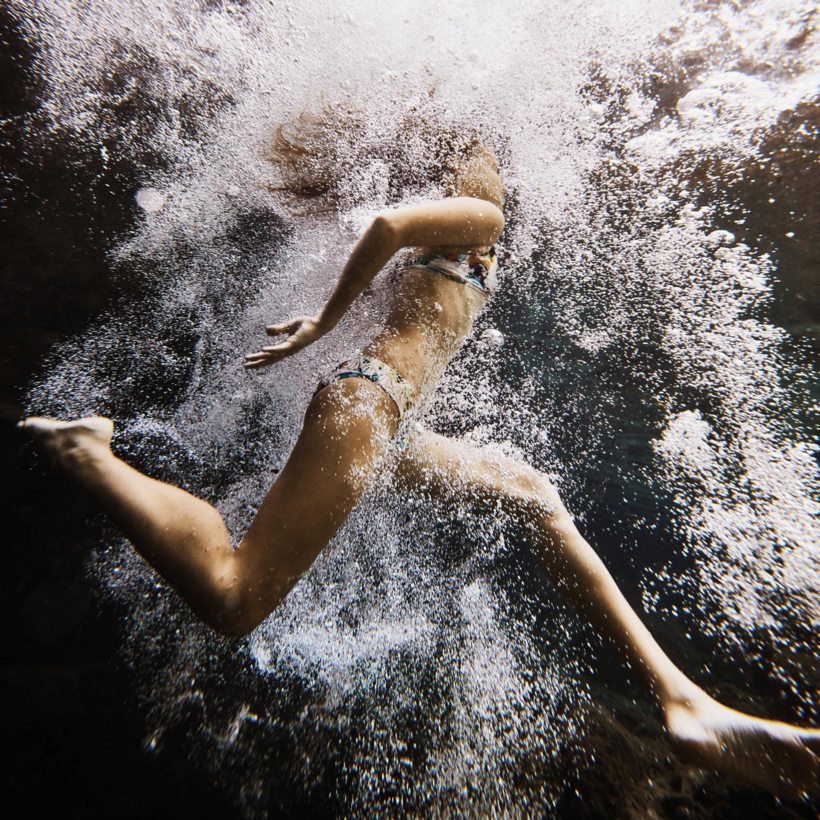We’ve all heard that cold water swimming is supposed to be good for us and that regular use of traditional saunas can make us happier and healthier, but the latest trend combines the two extremes. Contrast therapy, as it is known, entails switching between hot and cold temperatures, jumping from cold water to sauna and back again, and is said to improve circulation, boost mood and promote muscle recovery.
It’s not a new concept: the Romans would have a caldarium (hot steam room) and a frigidarium (cold pool) in their bathhouses, while for decades athletes have used contrast therapy to aid recovery. However, the practice has recently caught the imagination of the wellness brigade and word has spread about its healing capabilities.
Spas focusing specifically on contrast therapy are appearing throughout the U.K. The most fashionable include Repose Space in Kensington, Kontrast in Manchester, Sauna and Plunge in Shoreditch, and the members-only club Contrast Anerley in south London, where you can dip and plunge in the chicest surroundings. At Arc, a mecca for stressed-out executives in Canary Wharf, therapists will guide you through the contrast experience in its large sauna and eight cold baths while simultaneously incorporating practices such as breathwork and aromatherapy. High street gyms are also buying into the trend. At branches of 1Rebel in Kensington and Holborn the large saunas and plunge pools are “booked out weeks in advance,” according to a spokesperson, while David Lloyd offers contrast therapy at many of its gyms.
Ben Wright, a lecturer in exercise physiology at Oxford Brookes University who has investigated the trend, says contrast bathing does have benefits. “Most people who try contrast therapy do so to boost general wellness and claim it helps with mood improvement, stress relief and circulation,” he says. “It is relatively safe but there are things you need to know before you try it.” Here’s a guide.
How Does It Work?
Dr. Mark Harper is a consultant anesthetist at Sussex University Hospitals, a researcher in the therapeutic uses of cold and hot therapies, and the author of Chill: The Cold Water Swim Cure. He explains that the hot, dry heat of a sauna and the cold temperatures of a plunge pool—often referred to as an ice bath but typically just water cooled to 50 to 60 degrees provide moderate amounts of micro-stress that activate the sympathetic nervous system and anti-inflammatory and cardiovascular mechanisms, promoting feelings of relaxation. “They are relatively gentle ways to obtain the kind of moderate stress that will benefit our health,” Harper says.
With cold water immersion, receptors in the skin detect a change in temperature and that initiates a response that temporarily increases breathing rate, raises heart rate and causes the blood vessels to the body’s extremities to narrow, a process known as vasoconstriction. In the heat, the opposite occurs as blood vessels widen—or vasodilate—to improve flow. Alternating between hot and cold exposure thus causes intermittent vasoconstriction and vasodilation, which results in increased blood flow and oxygenation around the body. Both applications are safe provided that temperatures are not too extreme. “A range of 50 to 40 degrees for a cold plunge and 158 to 170 degrees for a sauna is ideal for mood, cardiovascular and metabolic benefits,” Wright says.
Contrast Therapy Boosts Blood Flow and Reduces Inflammation
There is plenty of evidence for the benefits of regular sauna use and some for the positive effects of cold water exposure. A review in the journal Experimental Gerontology showed that sauna bathing helps to repair cell damage and protect against exposure to subsequent stressors. Another paper in the International Journal of Circumpolar Health showed that tension, fatigue and memory problems were significantly reduced in people who practiced outdoor winter swimming, the cold water inducing a stress reaction that increases the secretion of catecholamines, hormones that enhance mood. Using both is believed to maximize the healing effect.
“The idea is that because of the repeated widening and constriction of blood vessels, contrast therapy improves healing, boosts blood flow, reduces inflammation and promotes faster recovery from exercise,” Wright says.
Because of the sudden temperature shifts, Wright cautions, people may feel dizzy due to blood pressure fluctuations, and this is especially heightened for anyone with underlying health conditions or cardiovascular disease. A more gradual transition is a good idea, he says, with a minute or two of ambient air temperature before hopping from cold to warm. The “shock” is part of the beneficial effect, but individuals should listen to their bodies and remember to keep well hydrated.
Aim For a Session Once or Twice a Month
“Ideally, you will need to contrast bathe once a week or more often for greatest benefit,” Wright says. “Once or twice a month will make you feel better immediately, but more often is needed for lasting changes.”
Studies from Finland, where sauna use is much more commonplace than in the U.K., generally suggest that using a sauna between three and seven times a week provides maximum positive health effects. Most of us don’t have the time (or money) for that but, encouragingly, a 2024 study in the International Journal of Circumpolar Health did show that using a sauna one to four times a month resulted in the biggest gains in happiness and health. Hans Hagglund, a researcher at Uppsala University Hospital in Sweden, also discovered that even those who used saunas only once a month were “happier, sleep better, have more energy, and rate their mental and physical health better” than those who didn’t use them at all.
With cold plunges, even a single session can bring positive results. “Just five minutes in water cooled to 68 degrees has been shown to improve mood and a single 15-minute cold immersion at 50 degrees can lower cortisol levels, which helps with stress control, as well as reducing self-reported ‘negative feelings’ for up to three hours,” Wright says. In combination, he adds, the effects might be more profound for some people.
It Can Reduce Muscle Soreness
“There is some evidence to show contrast bathing can reduce muscle soreness two days after exercise and also reduce markers of muscle damage compared to passive rest,” Wright says. In one study at the University of British Columbia, physiologists looked at the effects of subjecting one leg to contrast therapy. “Results showed increases in blood volume only in the muscle tissue of the leg exposed to contrast bathing, which potentially improves circulation and reduces inflammation,” Wright says.
Another study in the International Journal of Physiology and Performance looked at the effects of contrast bathing on competitive runners. “Just six minutes of 60 seconds hot and 60 seconds cold contrast therapy reduced muscle soreness significantly one and two days after intense exercise,” Wright says. “The researchers found that heat or cold water therapy alone had no effect on recovery.”
Does It Affect Men and Women Differently?
There are individual variations and responses to every therapy, Wright says. Women tend to have a higher percentage of subcutaneous body fat, which provides good insulation but is not great at generating heat. “We know that they do tend to lose heat more quickly and start shivering at higher temperatures than men, who with greater amounts of skeletal muscle mass tend to be able to tolerate the cold better,” Wright says. “Research has shown that women tend to ‘feel the cold’ at 65 degrees compared to men, who feel it at 58 degrees, which could mean they are less comfortable staying in cold temperatures for as long as men.” Hormonal differences might also be at play. “There’s some suggestion that body temperature rises by one to two degrees during the luteal phase, or second half, of the menstrual cycle, so that might not be the best time to try contrast therapy for the first time,” Wright says.
Don’t Combine Contrast Bathing with Alcohol
Gen Z in particular has swapped hanging out in bars for communal saunas, and contrast bathing spas have a similar social vibe. Often a bar is within reach of the sauna or plunge pool. Does this mean it’s OK to indulge in a glass of champagne? Absolutely not, Wright says: “Alcohol is an absolute no-no before, during or after contrast therapy.” About half of the deaths in saunas globally are thought to be attributable to alcohol intake, as it is a diuretic that promotes dehydration, which is amplified by the heat. And despite the warm glow you might feel after a drink or two, there is evidence that alcohol causes a decrease in core body temperature and increases the risk of hypothermia during cold exposure. “Alcohol also reduces blood pressure, causing dizziness and fainting in vulnerable individuals,” Wright says. “It should be avoided on the days you are taking contrast bathing therapy.”
Peta Bee is a U.K.-based freelance health journalist




